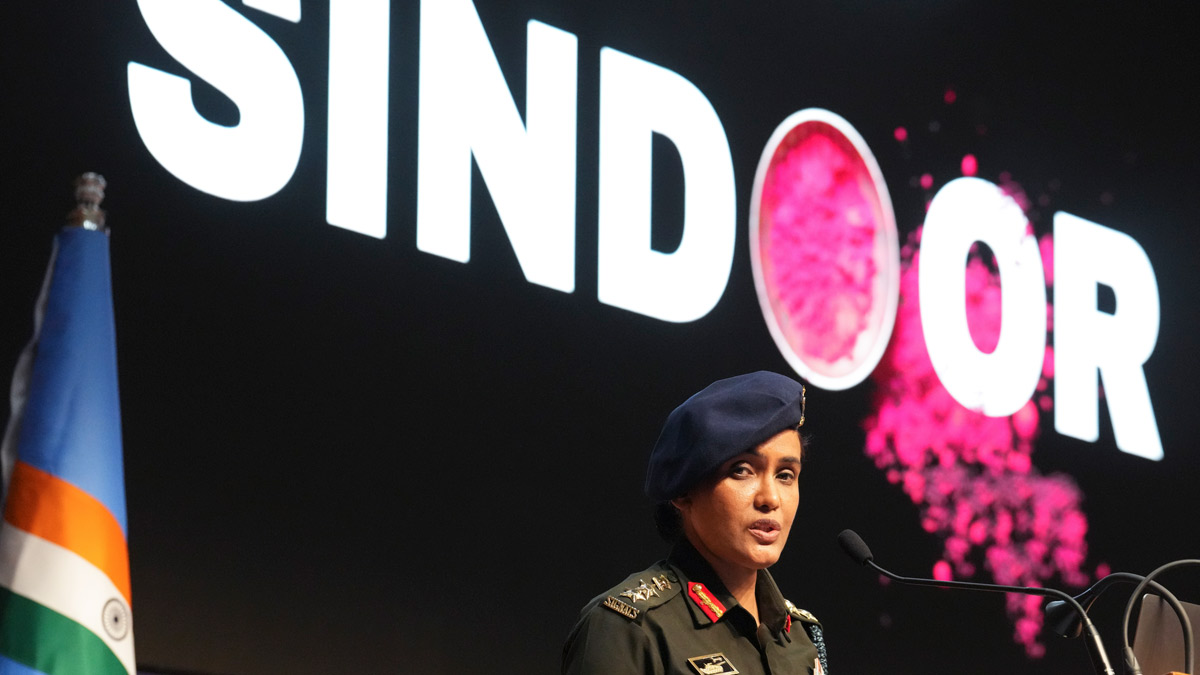OPINION: After Operation Sindoor, there is no turning back for India

The India-Pakistan conflict is unfolding almost like a textbook case. A terrorist attack, which killed 26 tourists in Kashmir, was planned and executed by terrorists under the direct supervision of the Pakistani Army. After a few days of waiting, India launched 'Operation Sindoor', targeting nine locations in Pakistan, including two in Punjab. The strikes were precise and deadly, hitting the terrorist nerve centres hard.
The Pakistani Army, predominantly controlled by the Punjabi Muslim elite, were incensed by the assaults on Bahawalpur and Muridke, in their home state. These locations serve as the headquarters for Jaish-e-Mohammad and Lashkar-e-Taiba.
The Pakistani response on the night of May 7-8 was rapid, as they sent drones and missiles at 15 sites along the Indian border, specifically targeting Indian defence installations. The Indian air defence with the S-400 units as its mainstay responded well and thwarted the Pakistani onslaught. Nonetheless, approximately 16 Indian civilians were casualties due to this Pakistani operation.
The unsuccessful Pakistani retort was promptly succeeded by Indian strikes on the Pakistani air defence installations within hours. This is a basic operation conducted by any military force prior to a significant engagement, referred to as the Suppression of Enemy Air Defence (SEAD). The air defence systems in Lahore were incapacitated during this operation.
India’s upper hand in the conflict
The whole of Thursday (May 8) was spent in anticipation, with everyone hoping that the situation would de-escalate. Ideally, Pakistan should have taken this opportunity to seek diplomatic alternatives. The hopes were, however, belied as Pakistan launched vicious drone and artillery attacks late in the evening. It targeted the entire border along Rajasthan, Punjab, Jammu and Kashmir. Jammu city and other surrounding areas faced swarms of Pakistani drones which were engaged by the Indian air defence guns. Fortunately, there was no worthwhile damage or casualties as a result of this onslaught.
The intent of this Pakistani provocation is not understood because in military operations, meaningless actions are only taken by incompetent and confused commanders. Regrettably, there is no shortage of this creed in Pakistan, often dragging the two neighbours to war. This failed and unorganised attack from Pakistan unleashed the might of the entire Indian defence forces in Pakistan. Major cities of Pakistan like Karachi, Lahore, Islamabad and Muzaffarabad have been assaulted by combat aircraft and missiles. The scale of casualties is yet to be established.
At this point in time, India appears to have a clear edge, as it has struck Pakistan at will, paralysing its defences and downing its fighter aircraft. Meanwhile, India has effectively defended itself against all Pakistani counterattacks. Nevertheless, at this juncture, forecasting the future dynamics of the ongoing war remains challenging. The duration of this confrontation remains uncertain, as does the possibility of it escalating into a ground war.
Validation of Indian armament, strategy and diplomacy
The recent developments have highlighted a vital strategic lesson: the essential importance of durable military capability. India's sustained investments in sophisticated platforms, including Rafale fighter jets, the S-400 air defence system, precision-guided bombs, and other state-of-the-art technologies, have produced substantial benefits, augmenting both offensive and defensive operational efficacy. This experience also underscores the pressing necessity to expedite the indigenisation of defence production.
The outcomes observed thus far reflect the clarity, coherence, and growing effectiveness of India’s higher defence management as well as its calibrated diplomatic initiatives. While a fuller picture will emerge as more details become available, the current trajectory suggests a maturing strategic culture and improved institutional coordination in responding to the evolving India-Pakistan dynamic. Nonetheless, there exists an urgent necessity for more profound and extensive military reforms to guarantee sustained strategic preparedness and operational coherence throughout all tiers of the national security framework.
Execute the mission to its full conclusion
At this moment, India's leadership confronts a pivotal decision—de-escalate for immediate peace or maintain pressure for long-term strategic change. The inclination to engage diplomatically—offering an olive branch, so to speak—will definitely be compelling. However, such gestures have always produced little more than temporary pauses preceding the subsequent provocation, like Uri or Pahalgam.
The primary source of instability in the region is not the Pakistani state itself but rather its military establishment—an extra-constitutional entity that has always functioned as a state within a state. It bolsters extremist factions, undermines civilian governance, and capitalises on ongoing animosity with India to legitimise its supremacy. For India, to attain permanent outcomes from 'Operation Sindoor', it must fully reveal and disgrace this military apparatus as a destabilising force, detrimental not only to India but also to Pakistan.
The developments of the last two days, which have unfolded at an unusual pace, offer a rare strategic opening. India must maintain the momentum and continue applying calibrated military pressure. A weakened and discredited Pakistani Army could open the door to structural change within Pakistan and, eventually, a more stable subcontinent.
Peace cannot be built on deceit. It must be rooted in the demolition of the systems that sustain conflict. The responsibility of that mission, albeit difficult, now rests firmly with India.
The opinions expressed in this article are those of the author and do not purport to reflect the opinions or views of THE WEEK.
Defence